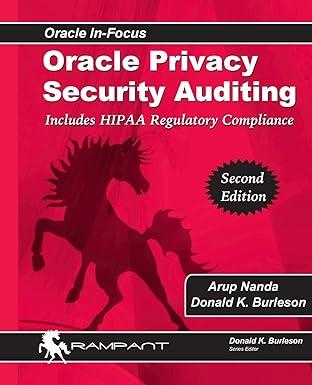Question
Problem 1 setup The owner of one acre of ponderosa pine (Pinus ponderosa) needs to plan a forest rotation length. Unless the owner chooses to
Problem 1 setup
The owner of one acre of ponderosa pine (Pinus ponderosa) needs to plan a forest rotation length. Unless the owner chooses to sell the forest land, it will be kept in forestry and the chosen rotation will be maintained indefinitely. Assume that the stumpage price is p = $2.50 per cubic feet and the fixed cost of harvest is C = $4,350.90. The volume (in cubic feet) of the stand at any point in time is given by W(t) = at - bt2 = 141.2t - 0.2824t 2 , where t is measured in years. Assume that the forest owner uses an annual discount rate of r = 0.01 and that the present value of bare land is S = $17,912.46 per acre.
Return once again to the set-up of problem #1. Consider an alternative scenario wherein the forest owner's stand provides wildlife habitat that society values. Assume that the annual value of this non-timber benefit is fixed at Ht = $12.77 per acre per year. Assume further all other parameters from problem #1 remain the same.
3.a. Write down a condition that characterizes the socially-efficient rotation length. In a few sentences, interpret the condition. 2 of 2
3.b. What is the socially-optimal rotation length, rounded to the nearest year? Show your work.
3.c. Using a figure, compare your solution from problem #3.b with your solution from problem #1.b. In a few sentences, interpret your results.
Step by Step Solution
There are 3 Steps involved in it
Step: 1

Get Instant Access to Expert-Tailored Solutions
See step-by-step solutions with expert insights and AI powered tools for academic success
Step: 2

Step: 3

Ace Your Homework with AI
Get the answers you need in no time with our AI-driven, step-by-step assistance
Get Started


